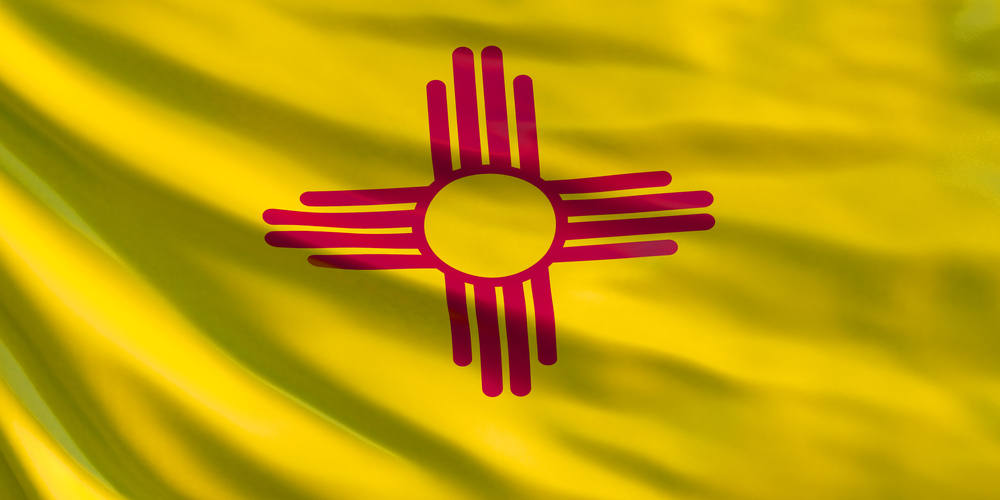
New Mexico historian Ralph Emerson Twitchell designed the first flag of New Mexico statehood, as authorized in 1915. It consisted of a blue field with a miniature United States flag in the upper left corner, the state’s great seal in the lower right corner and “New Mexico” embroidered diagonally across the field from the lower left to the upper right corner.
In 1920, the New Mexico Chapter of the Daughters of the American Revolution (D.A.R.) advocated the adoption of a flag representative of New Mexico’s unique character. Three years later, the D.A.R. conducted a design competition, which was won by the distinguished Santa Fe physician and archeologist, Dr. Harry Mera. The doctor’s wife, Reba, made the winning flag design with a symbolic red Zia on a field of yellow. In March of 1925, Governor Arthur T. Hannett signed the legislation, which proclaimed the Mera design as the official state flag.
The State Flag of New Mexico has a modern interpretation of an ancient symbol of a sun design as seen on a late 19th century water jar from Zia Pueblo. This pueblo is thought to have been one of the Seven Golden Cities of Cíbola, which explorer Vásquez de Coronado sought. The red sun symbol was called a “Zia” and is shown on a field of yellow. This distinctive design reflects the pueblo’s tribal philosophy, with its wealth of pantheistic spiritualism teaching the basic harmony of all things in the universe. Four is the sacred number of Zia, and the figure is composed of a circle from which four points radiate. To the Zia Indian, the sacred number is embodied in the earth with its four main directions; in the year with its four seasons; in the day, with sunrise, noon, evening and night; in life, with its four divisions – childhood, youth, adulthood and old age. Everything is bound together in a circle of life, without beginning, without end. States of America have all flown over the “Land of Enchantment” during the long history of the state. The Zia believe, too, that in this great brotherhood of all things, man has four sacred obligations: he must develop a strong body, a clear mind, a pure spirit, and a devotion to the welfare of his people.
The red and yellow are the colors of Isabel of Castilla that the Spanish Conquistadors brought to the New World. The symbol’s proportions are fixed by legislative act, with the four groups of rays set at right angles, the two inner rays one-fifth longer than the outer rays. The diameter of the circle in the center is one-third the width of the symbol.
